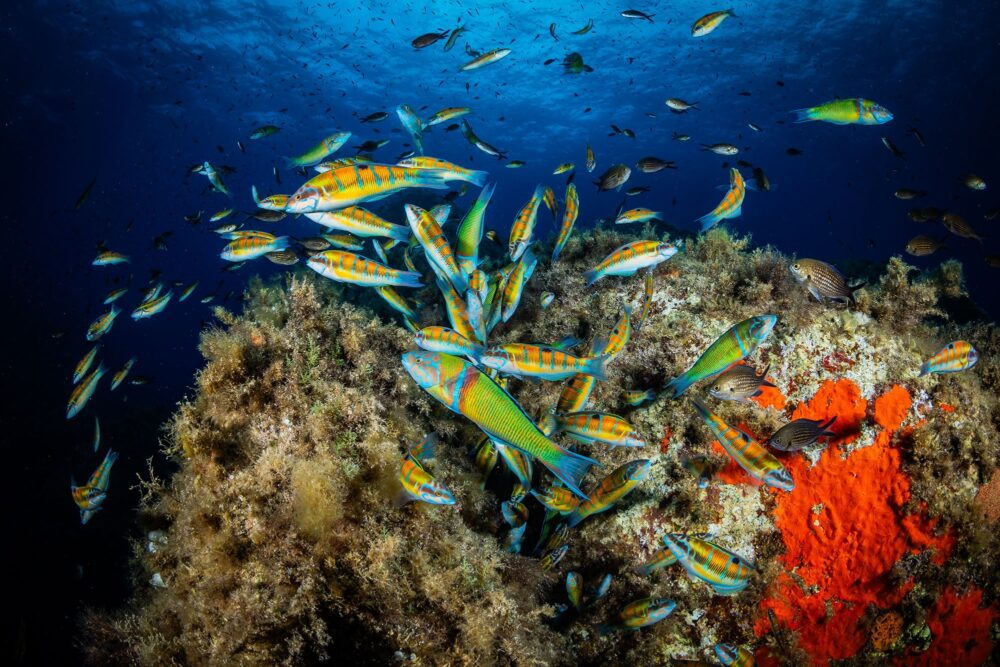The oceans are the blue heart of the planet: they regulate the climate, nourish billions of people and keep precious biodiversity. This article deepens the threats they face and the urgent, global and local actions, necessary to protect them before it is too late
World Oceans 2025 day: a global appeal to save the “Blue lung”. An international event for the future of the oceans
On June 8 the World Oceans dayestablished in 1992 during the Summit of the Land of Rio de Janeiro on the proposal of the Canadian government.
L’General Assembly of the United Nations He officially recognized it, involving governments, scientists, indigenous communities, NGOs and citizens in the coordination of global activities.
The initiative is closely linked to goal 14 of Agenda 2030: keep and use oceans, seas and marine resources in a sustainable way.
The theme 2025: sustainable fishing for healthy oceans
The 2025 edition launches a clear message: sustainable fishing is fundamental for the health of the marine ecosystems and the communities that depend on them.
The goal is to promote responsible practices, limit environmental impacts and guarantee the survival of fish species for future generations.
Concrete actions for marine protection
The World Ocean day invites everyone to make concrete gestures. Reduce the use of disposable plastic, participate in beaches cleaning and prefer certified fish are effective choices.
Also reduce carbon footprint and support marine protection laws represent fundamental steps. Events, workshops and school activities help a raise public awareness and spread awareness.
A silent crisis threatens marine life
The oceans are facing a devastating, often invisible crisis. Industrial fishing, fueled by the growing global question, is emptying the seas, compromising the balance of submarine habitats. Numerous species risk extinction, with dramatic consequences for biodiversity and global food safety.
Impressive numbers: trillion of fish caught every year
A study published on Animal Welfareentitled “Estimating global numbers of fishes caught from the wild annually from 2000 to 2019”reveals that every year they are caught between 1.1 and 2.2 trillion of wild fish.
In 2019, 87% of the vertebrates intended for nutrition were made up of wild fish, making them the most exploited vertebrates in the world. Between 490 and 1,100 billion of these fish are transformed into flour and aquaculture oil, not for direct human consumption.
Non -selective fishing: a danger for the entire ecosystem
The non -selective fishing It affects key species for the Marina food chain. Their removal can generate cascade effects and cause real ecological collapses. The consequences fall on the health of the planet and on the global food supply.
Excessive exploitation damages ecosystem services
The oceans offer essential services: they regulate the climate, absorb CO₂, protect against natural disasters. Destructive fishing, such as background trawling, damages seabed and coral reefs, hindering the regeneration of habitats.
Sentient fish, but forgotten
Industrial fishing also raises serious ethical issues. Pisces, sentient beings, are captured with traumatic and slaughtered methods without stunning, often without any protection of their well -being. Phil Brookeby Fishcount, denounces the absence of the theme in global ethical debate.
An ecological, ethical and social challenge
Reforming industrial fishing means rethinking our relationship with marine resources. A radical change is needed to sustainable models, equipped and respectful of aquatic animals. The health of the oceans is an environmental priority but also a moral and social challenge.
Clean Oceans Initial 2.0: 3Miliardi for the most cleaners
At the UN conference on the oceans In Nice, six international development banks have launched the Clean Oceans Initiative 2.0 (COI 2.0).
International financiers for development are: the Italian Cassa Depositi e Prestiti (CDP)the French The Agence Française de Développement (AFD), the German Kreditanstalt Für Wiederaufbau (KFW), the European Investment Bank (Bei) and the European Bank for reconstruction and development (Bers), together with the Asian Development Bank (ADB) which joins as a partner.
The new program includes investments for 3 million euros Between 2026 and 2030 to combat marine plastic pollution.
Focus on prevention and circular economy
The second phase of the Coi represents the response of the international financial community to this emergency and focuses on:
- Prevention of marine pollution,
- Sustainable alternatives to plastic,
- Circular economy,
- Scientific indicators to monitor the environmental impact.
Targeted interventions in Asia, Africa and Latin America
The funds will be intended for the coastal areas of Asia, Africa and Latin America, with attention to river basins and areas with poor waste management. Asia represents a priority, being among the major sources of plastic dispersed in the seas.
Successes of the first phase of the Clean Oceans Initiative
Coi 1.0 exceeded the goal seven months in advance, mobilizing 4 million euros. He supported projects for the treatment of waste water in Sri Lanka, China, Egypt and South Africa. He financed the management of solid waste in Togo and Senegal and the protection from floods in Benin, Morocco and Ecuador.
A heritage to defend for the common good
The oceans provide food, work, climatic regulation and natural resources to billions of people. They absorb 30% of the global CO₂, but plastic pollution compromises its health and balance. Every year, 1.5 million tons of microplastics end up in the seas.
A strategic alliance for the future of the oceans
The Clean Oceans Initiative 2.0 is a concrete response to the environmental emergency. A strategic alliance between finance and the environment to promote innovation, prevention and sustainability. Protecting oceans today means guaranteeing a livable future for everyone.
(The cover photo is by Enrico Pompei, second prize in the Life Pinna competition)

